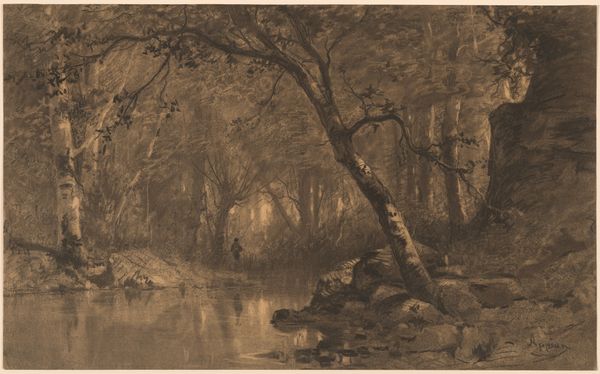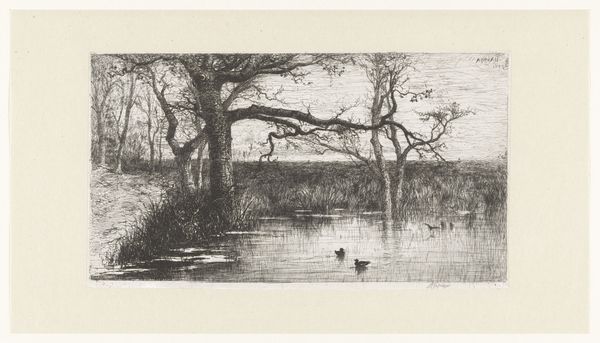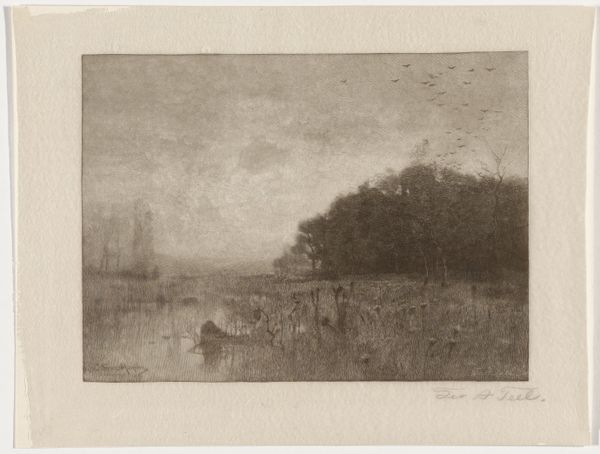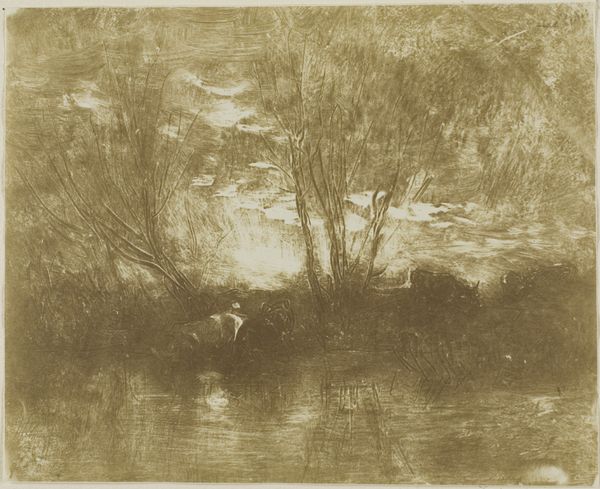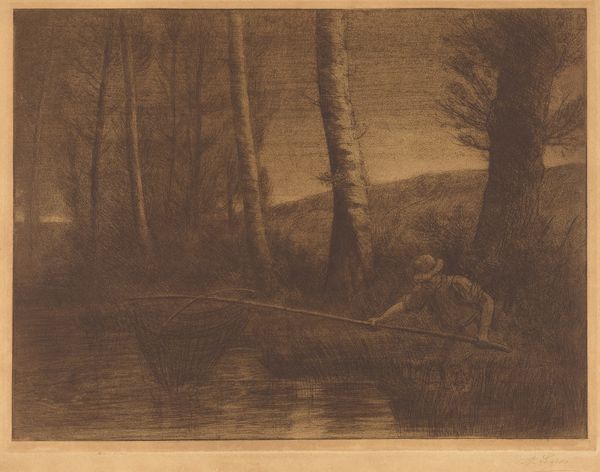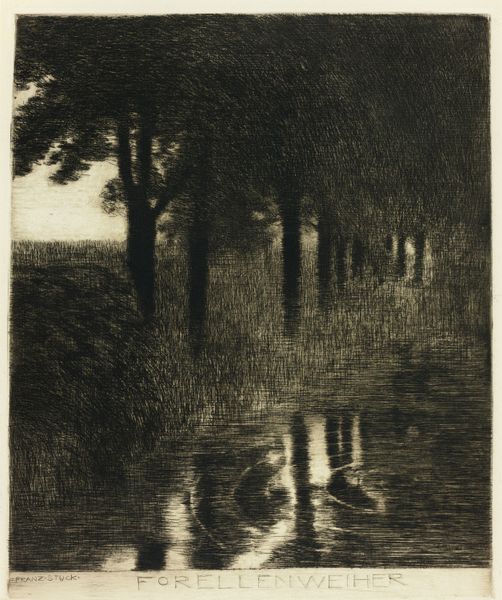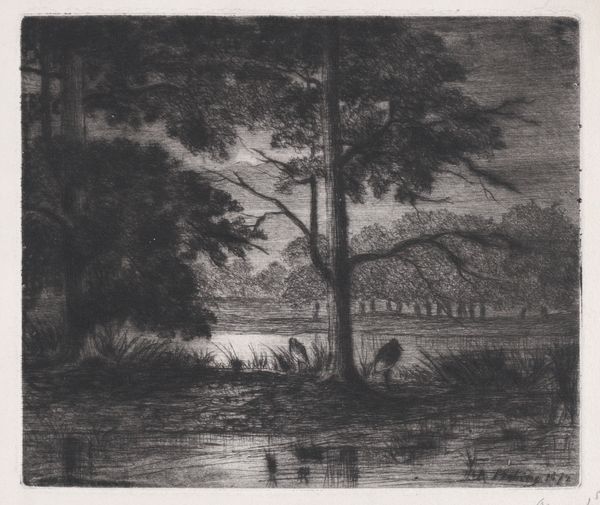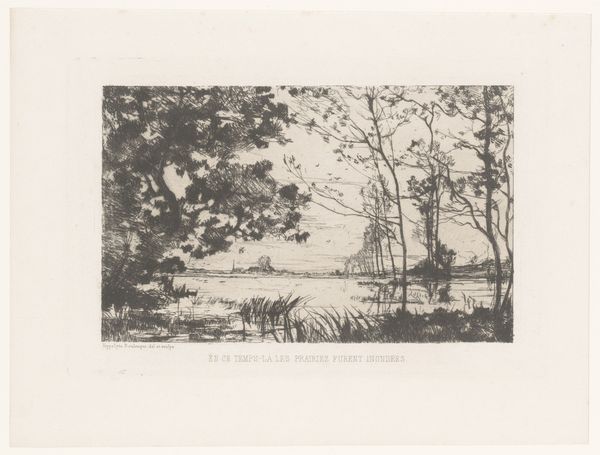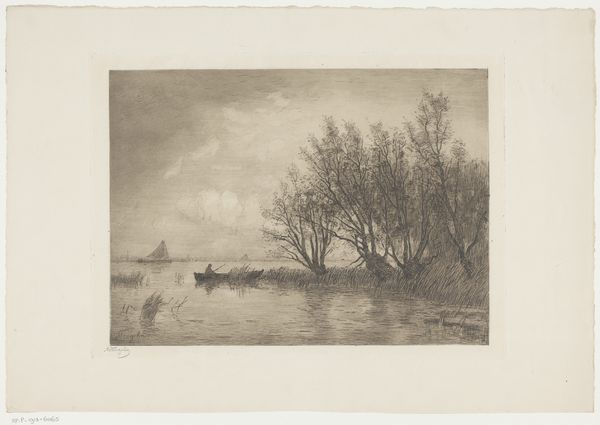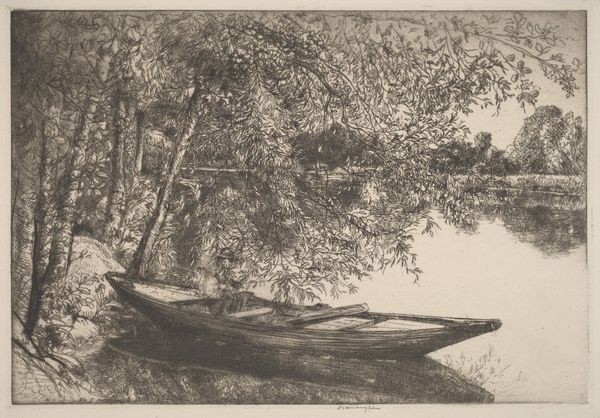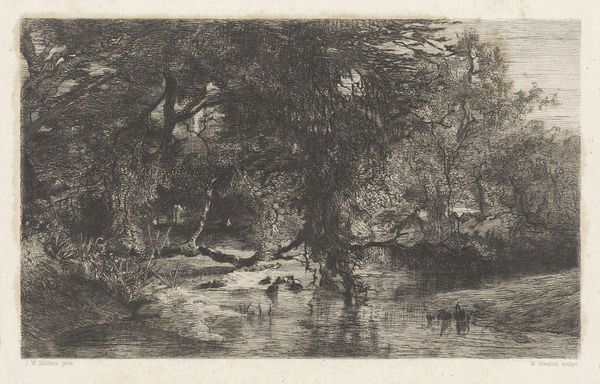
Pêcheur en Canot, au bord d'une Rivière (Fisherman in a Boat) 1887
0:00
0:00
print, etching
# print
#
impressionism
#
etching
#
landscape
#
form
#
line
#
genre-painting
#
realism
Dimensions: plate: 31 x 46.5 cm (12 3/16 x 18 5/16 in.) sheet: 38.7 x 53.5 cm (15 1/4 x 21 1/16 in.)
Copyright: National Gallery of Art: CC0 1.0
Editor: This is Adolphe Appian's "Pêcheur en Canot, au bord d'une Rivière (Fisherman in a Boat)," made in 1887. It's an etching. There's such a serene feeling here. The solitary figure of the fisherman… I’m curious about the process of etching. How did Appian achieve this atmospheric effect? Curator: That atmospheric effect speaks volumes about Appian's material process. Look closely; the etched lines vary in depth and density. He was manipulating the copper plate itself, using acids and stopping-out varnishes to control the bite. This isn't just about representation, it’s about *making* the image. Editor: So, the process itself informs the artistic outcome. The etching relies on industrial methods, using chemical reactions… Curator: Exactly. And consider the implications of producing multiples. Etchings allowed for wider dissemination of imagery, influencing taste and accessibility. How does the reproducibility influence its meaning and impact, do you think? Editor: It removes it, perhaps, from the singular aura of a unique object, but inserts it into circulation as part of everyday visual culture. Instead of art for the wealthy, the means of production allow it to be spread. Curator: Precisely. Think about who had access to these images. Were they hung in parlors? Did they circulate among artists? The value isn’t just in the image, but its potential use and social impact. The labour and materials – metal, acid, ink – are also indicators. Editor: I hadn’t considered that before. It’s not just about what's depicted, but how and for whom it was produced. Thank you. Curator: Indeed. Art exists within a web of material conditions, which in turn informs its content.
Comments
No comments
Be the first to comment and join the conversation on the ultimate creative platform.
